#coleus when to plant
Text
Waste management in Home and Types of wastes at home
Types of wastes at home
MAY 27, 2022by Sadabahar Greens Pvt. Ltd.

Types of Waste in Waste Management
Increasing awareness about the environment has brought issues like inefficient means of waste management in Disposal in the community to the forefront. We need to become aware of the waste generation daily and ensure that it is disposed of in a safe and environment-friendly manner.
Now that everyone is staying at home, it’s more important than ever before that we should have efficient waste management at home. Accumulated garbage can breed germs and spread disease; something that should not be taken lightly. If this is something that you have taken for granted till now, here’s how you can make a conscious start. To begin with, what are the kinds of waste generation at home? Generally, there are three types:
Organic Waste

This is the waste from our kitchens, such as leftover food, Vegetable and fruit peels, eggshells and so on. Organic waste is biodegradable and can be composted if appropriately treated with a sustainable solution composter. For a sustainable compost use Sadabahar composter vertical garden planter tower will help the best feature of it is self-fertilizing with inbuilt composter attached with planter and good equipment for waste management at home that is available at Urban plants.
Toxic Waste
Old expired medicines, shoe polish, batteries, chemicals, bulbs, fertilisers and so on fall under this category. Waste need to be collected separately and disposed of with care so that they do not contaminate the environment it is the important thing to avoid plastic as per the rule of waste management at any place.
Recyclable Waste
Paper, metals, glass and plastics that can be recycled should be collected separately and sent to the recycling plant it's an alternate this to achieve best waste management at your home.
#jade plant benefits#bird of paradise cultivation#ice flower#indoor oxygen plant#oxygenated plants indoor#paradise birds plant#coleus when to plant#indoor oxygen plants#indoor plants for oxygen#indoor plant oxygen#oxygen plant indoor#oxygenating plants indoor#oxygen indoor plant#benefits of crassula plant#guava fruit varieties#mango amrapali#fruits plant#baramasi mango#best plant to gift#best plants for gifting
0 notes
Text

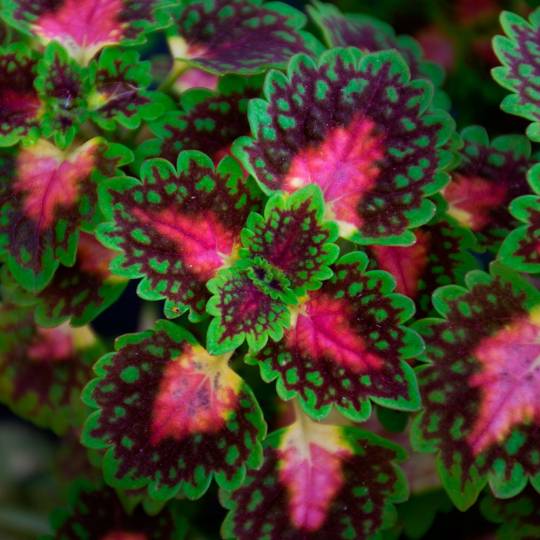
assigned houseplants for my idiots (ewyn had his assigned by default lmao)
Hoya/Waxplant (Ihrin) and Coleus (Ewyn), I need both these weeds in my life now
#I remember when I was little my grandma had a waxplant and I was so fascinated with those flowers#I was too afraid to touch them thinking I'd ruin them but I still remember loving them so much and being mesmerized by their look#and coleus...I think this plant has the prettiest leaves ever. please look at the dozens of variation and color combinations and patterns#they're so damn pretty#but yeah hah...I've been trying to find a coleus for so long...why the hell is it so hard to find here........ :((((
1 note
·
View note
Text
Coleus scutellarioides
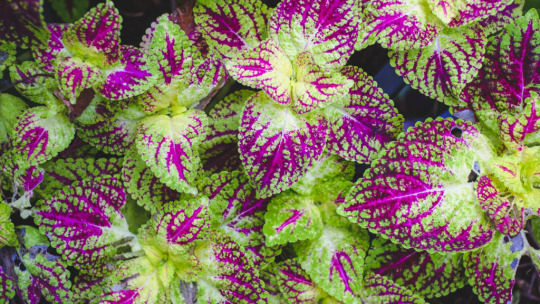
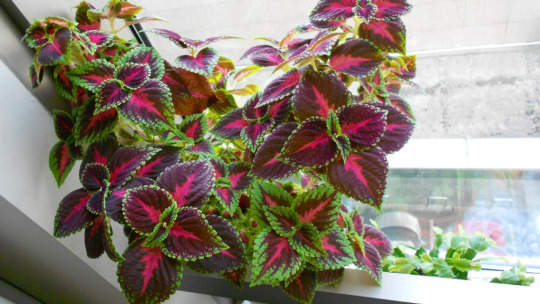
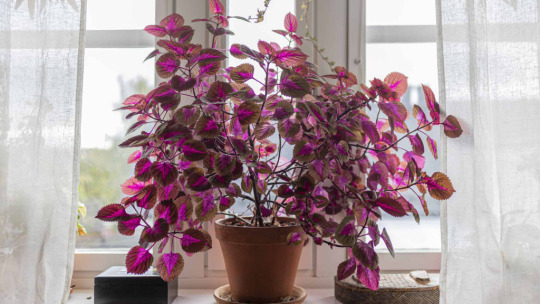
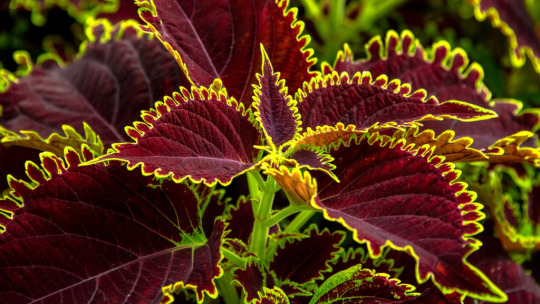
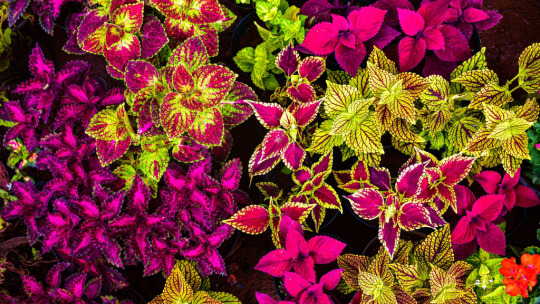
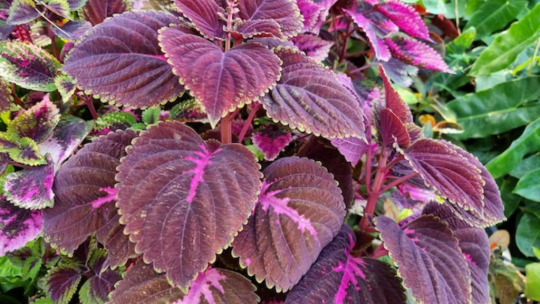

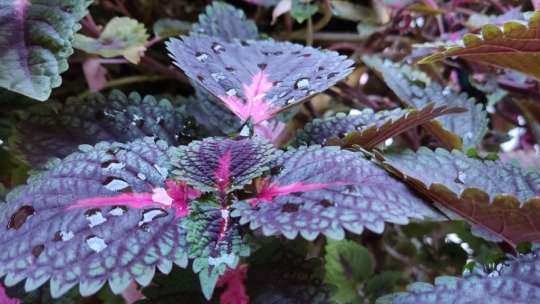
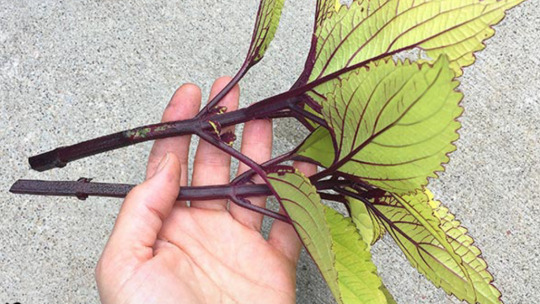

#Coleus fairway mosaic#This is the most beautiful coleus with multi-colored leaves. Add stunning border decoration plants in gardens.#coleus fairway mosaic -coleus leaf#Coleus Green with pink#This variety has bi-colored foliage with pink centers surrounded by green margins#coleus green with pink -coleus leaf#Coleus Painted Nettle#It is a chocolate brown variety with pink painting colors in the middle of the leaves.#coleus painted nettle -coleus leaf#Plant Care#Soil#These indoor coleus plant loves to grow in rapidly-drained soil of any range but well-drained soil is preferred to avoid root rot & congest#coleus scutellarioides soil#Watering#Application of water to this plant only when the top inch of soil dries & plant begins to wilt. Overwatering leads to root rot & death.#indoor coleus plant watering-coleus leaf#Sunlight#The indoor ornamental plants are shade-loving plants. Indoor coleus enjoys indirect sunlight. But the leaf color is achieved through the di#evening sunlight#or under a shade net.#indoor ornamental plants sunlight-coleus leaf#Flowers#This plant bears a lavender-colored spike of flowers. Pinching the flowers helps the plant to grow faster & bushy.#coleus scutellarioides flower#Propagation#Easily propagated through stem cuttings. Just trim the base of the cuttings & allow the top leaves alone.#coleus leaf cuttings#Repotting#Transfer the plants to new bigger size pots when the coleus plants are found to be root bound over the drainge holes. Avoid placing the ind#coleus leaf plant repotting
0 notes
Text
Coleus scutellarioides
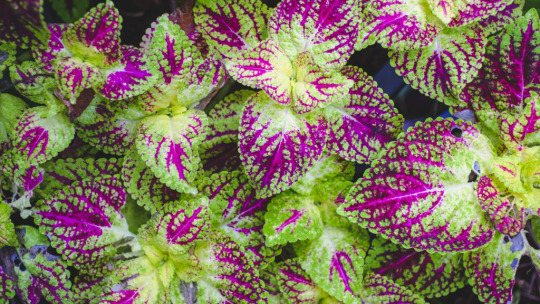

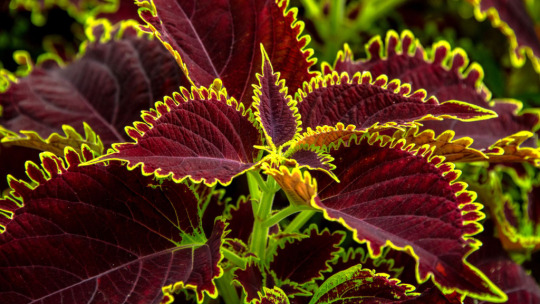
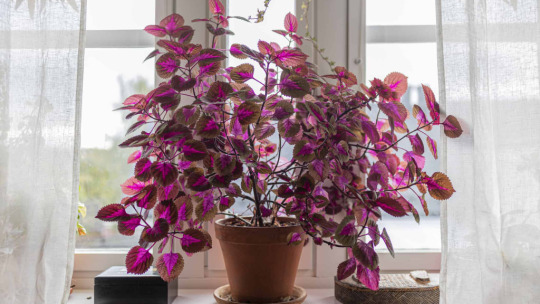
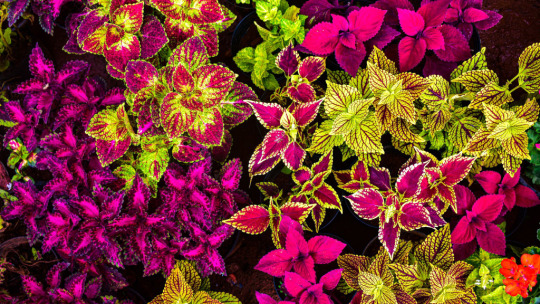





#Coleus Green with pink#This variety has bi-colored foliage with pink centers surrounded by green margins#coleus green with pink -coleus leaf#Coleus Painted Nettle#It is a chocolate brown variety with pink painting colors in the middle of the leaves.#coleus painted nettle -coleus leaf#Plant Care#Soil#These indoor coleus plant loves to grow in rapidly-drained soil of any range but well-drained soil is preferred to avoid root rot & congest#coleus scutellarioides soil#Watering#Application of water to this plant only when the top inch of soil dries & plant begins to wilt. Overwatering leads to root rot & death.#indoor coleus plant watering-coleus leaf#Sunlight#The indoor ornamental plants are shade-loving plants. Indoor coleus enjoys indirect sunlight. But the leaf color is achieved through the di#evening sunlight#or under a shade net.#indoor ornamental plants sunlight-coleus leaf#Flowers#This plant bears a lavender-colored spike of flowers. Pinching the flowers helps the plant to grow faster & bushy.#coleus scutellarioides flower#Propagation#Easily propagated through stem cuttings. Just trim the base of the cuttings & allow the top leaves alone.#coleus leaf cuttings#Repotting#Transfer the plants to new bigger size pots when the coleus plants are found to be root bound over the drainge holes. Avoid placing the ind#coleus leaf plant repotting#Pinching#This is the most important practice in Coleus plant care. Regularly pinch off the cuttings from the top growing ends to promote more branch#coleus indoor plant pinching-coleus leaf
0 notes
Note
If you don’t mind me asking , what happened? I’m usually a lurker but you’re my favourite writer and inspire me to write as well so I just wanna be here for you if something goes wrong pooks ❤️
Okay this ask was from the end of October and I'll finally answer it.
The reason I have been so depressed is that years of hardwork was completely destroyed.
My roommate had some church volunteers come by to weed a few bad spots around the yard. But they destroyed everything.
They ripped the rare white strawberries from the ground and they take YEARS to reach maturity. They killed the trumpet vine that was over 15 years old and was here long before I was.
They killed the comfrey. A sterile plant grown via live cuttings that I got from a mailed donation and cannot replace.
But they didn't stop there.
I woke up with the damage done and asked them to at least leave the dead plants so the nutrients would return to the soil and so I could retrieve seeds from the plants that had managed to go to seed.
They had killed my Jerusalem artichokes, my marigolds, my celosias, my tomatoes, my precious strawflowers, my coleus, my nasturtiums. A few had gone to seed but they bagged them up anyway and took them away. Ruining an entire season of seed saving.
They even went so far as to kill all my potted plants on the porch.
But this was not the extent of the damage.
When they had left I noticed they had dumped and thrown away all my cardboard boxes and a tub and several huge pots full of soil.
They threw away so much soil and scraped away and threw away mulch that was on the ground protecting the soil.
I mean huge amounts. Certainly not what I can replace easily.
I even cut down a large line of sunflowers and laid the stalks out neatly as a weed suppressant and they took all those away too.
Between the loss of seeds I needed for next year, the soil loss, and the loss of all the nutrients because they bagged up all the dead plants my ability to grow food for myself and the senior center has been crippled.
And since then I also lost a friendship, had drama with an ex, and have had some health issues.
81 notes
·
View notes
Text

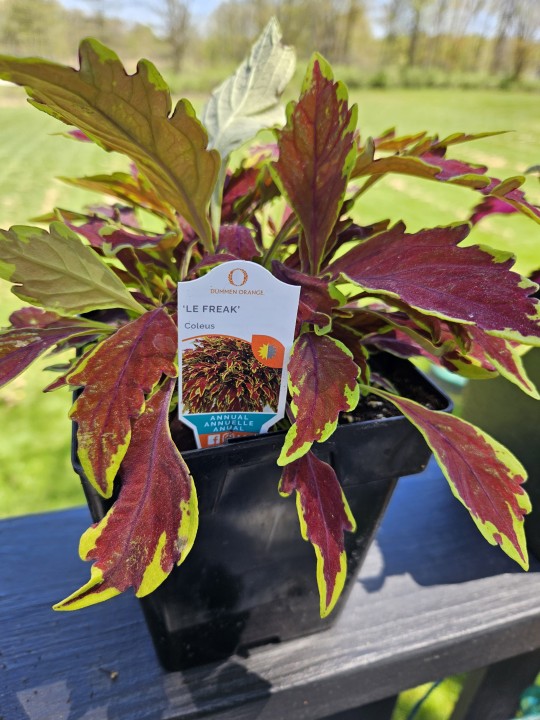
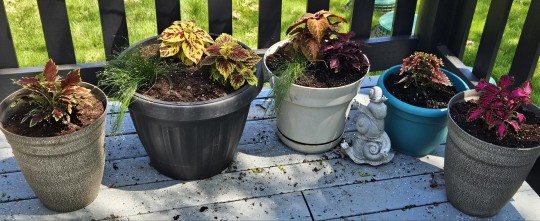
"For Mother."
Looks like I got my Greenskeeper planting (uhhh most of it, I still have my mint army) done a little earlier than expected!
My mom surprised me with my coleus plants this year, and I'm definitely hoping to get some more when the greenhouse restocks.
(I had to show y'all Le Freak! She sure is!!)
Happy Greenskeeper month from Coleus! Be extra nice to the plants this time of year!
:) Or she will find you.
#Flight Rising#Risinbloggin#Greenskeeper Gathering#Love my coleus and Coleus so much guys...oooough...
22 notes
·
View notes
Note
What flowers do you see as overrated? what about underrated?
Underrated: Literally any and all native plants. But especially the non-standard grasses; native grasses- not the typical ornamentals- really do not get used enough in garden landscaping! But also: A lot of native grasses actually make great turf grasses, too, and are way better than something like a clover seeded lawn (which is what people typically tend to default to when ripping up their traditional turf grasses).
Overrated: Petunias and Coleus. I'm so sorry to anyone who actually loves them, but I think they're so ugly! And they're always the default filler plant, too, so they're everywhere ... But lord, what a waste of money on such a boring set of annuals (well, technically Coleus is a Pendo-Perennial but the point stands).
#justletmebeokay#Answered Asks#Gardening Asks#2024 Asks#2024#Gardening#Gardenblr#Plantblr#Lawns Aren't Bad Lawn Culture Is#Green Witch#Green Witchcraft#Disabled Gardener
6 notes
·
View notes
Text
visited my local greenhouse and found they too have coleus downy mildew in all their coleus. so it's either this shitty weather or an issue this year higher up the supply chain. I hate when I find new plant diseases to be forever paranoid about for the rest of time
27 notes
·
View notes
Text
In honor of her birthday, I'm finally getting around to analyses for Gerheade! You may have noticed... Anyway! Wings!
This won't be a very long post...but the point is for it to exist at all.
Gerheade's wings are...very literally the second most common type among the Fairy Clan. The configuration, single set with branching veins, is the second most common configuration. The color, white, is the most common color by a massive margin.
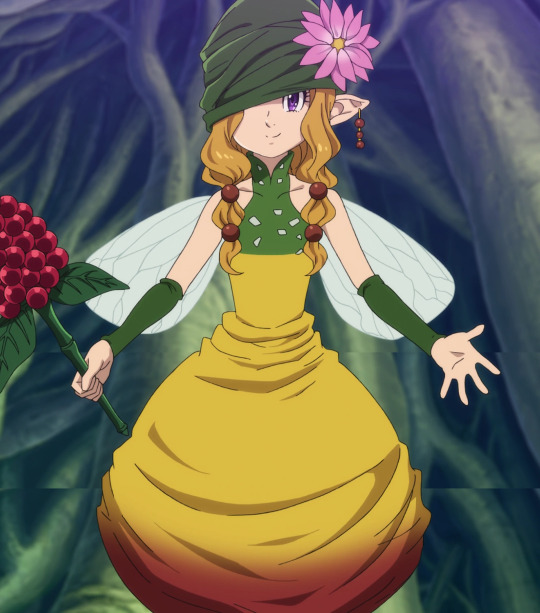
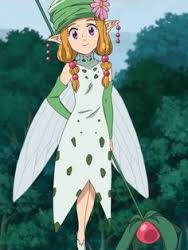
I believe this makes sense though, as I said in her plant symbolism post, being Gloxinia's sister means she's likely one of the first Fairies ever so she may be a sort of prototype.
People who aren't as familiar with her and the series overall might think her wings look a little odd compared to other Fairies. And that's correct, of course. They're short and blunted off at the ends in an odd way. We know that's because they've been damaged. They were originally the typical sort of spear head shape, but she lost about the length when she was attacked during the Holy War.
In the manga this is more obvious as they're drawn tattered and/or uneven in some panels.
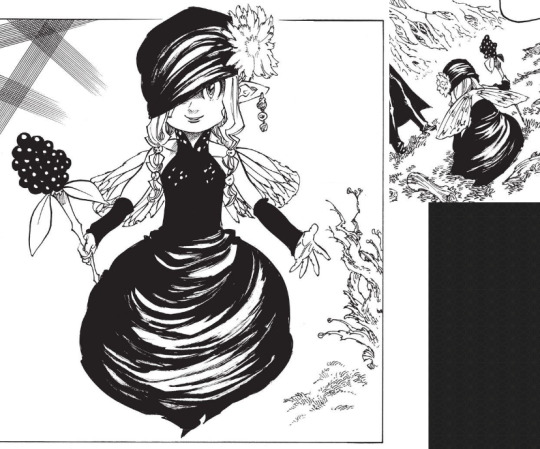
These is one thing uncommon about them though; their resting position. She holds them at rest in the same downward position Helbram does. While this isn't rare, as there's really only the two positions anyway, it is the less common of the two.
I always find the major change in the vein configuration between the original wings and the damaged wings to be interesting. There's nothing I find out of place about it, it's just interesting how they healed I guess. They way they compensated by shifting the larger cells back farther, and how the veins branch off more near the damaged edges. It kinda reminds me of how some plants recover from damage actually. I grow coleus in the summer,
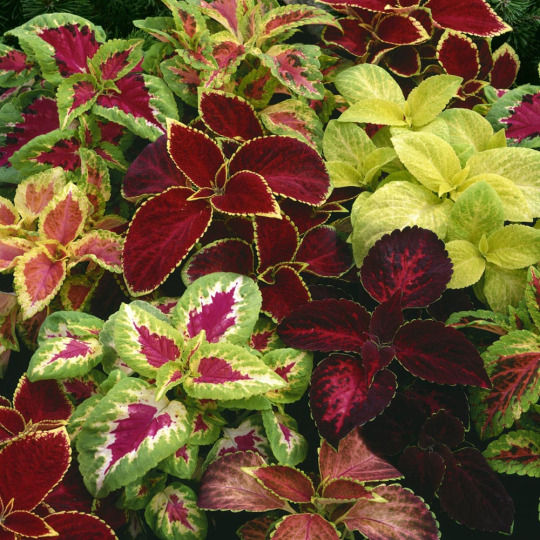
and the thing about coleus is that if a stem is cut or broken, the plant branch out from the nearest node, but not with just a replacement stem, it'll grow several more. This is how you can intentionally grow the plant to have thicker foliage. You prune it to make is grow bushier.
#nanatsu no taizai#seven deadly sins#7ds#nnt#7ds fairy#nnt fairy#7ds gerheade#nnt gerheade#7ds analysis#nnt analysis
4 notes
·
View notes
Text
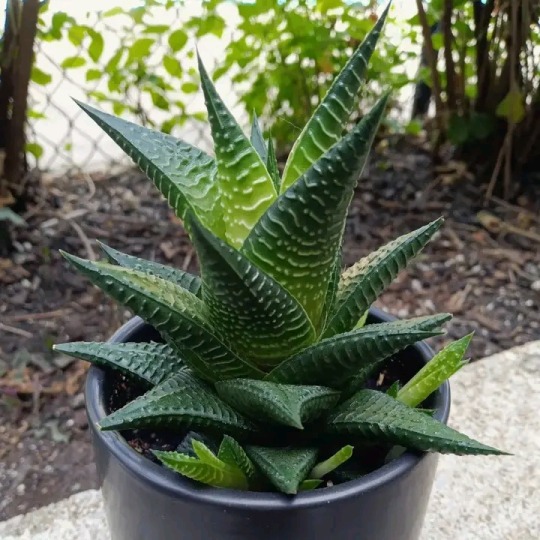



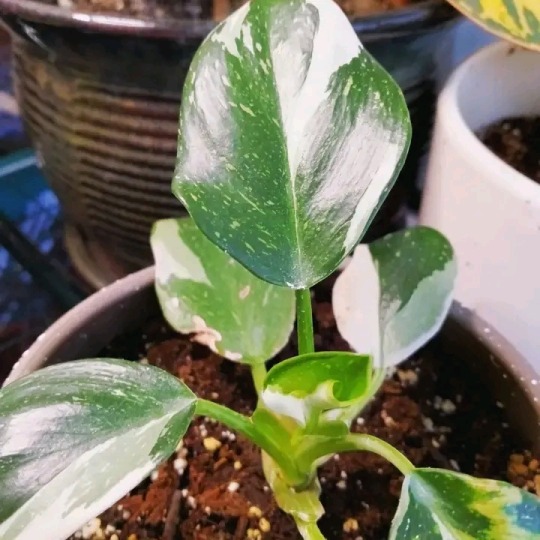
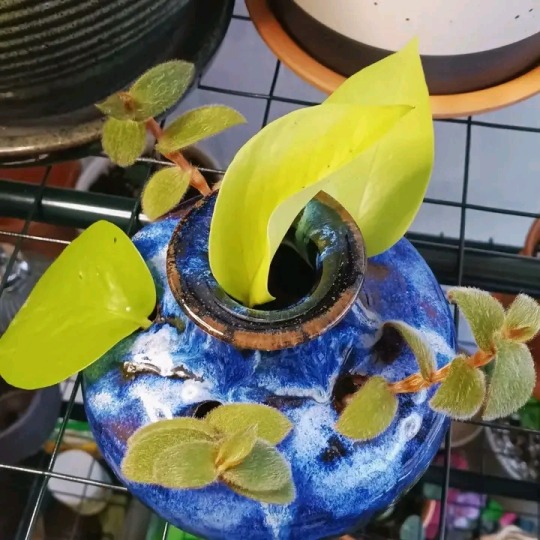
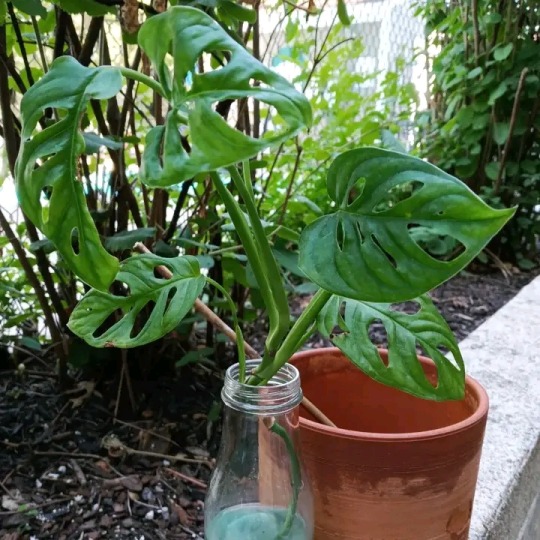
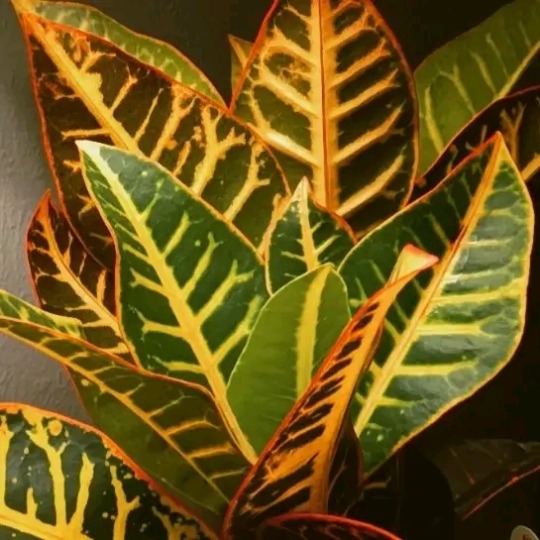

January 10th is Houseplant Appreciation Day! 💚
I am so thankful to have found such a fascination and love for taking care of plants. I have enjoyed plants since I was little, but it wasn't until I brought home an aloe vera the summer of 2021 when I felt my connection to plants really blossom. They give me so much joy, especially whenever I bring a plant home that isn't feeling so well and I get to provide the nourishment it needs to watch it bounce back up. We are about halfway through the cold season, and once the cold and dark hours lighten up, I am excited to see what growth my plants and I will achieve this year. 💚 I'm hoping to post more original posts onto this side blog as well!
🪴 Plants in photos in order of appearance:
Zebra haworthia
Heartleaf vine, Brasil/Brazil var.
Green Global pothos
Coleus
White wizard philodendron
Propagation pot with teddy bear vine and neon pothos
Monstera adansonii, "Swiss cheese plant."
Petra croton
Teddy bear vine
#houseplants#plantblr#haworthia#pothos#monstera#philodendron#croton#vining plant#succulents#mine#tag later
6 notes
·
View notes
Text
2022 Overview: House plants
2022 became the year of houseplants. This is mostly because we were in a Stage 4 drought for most of the Summer and, as a result, my tiny reclaimed garden was a sad affair that I couldn't (in good environmental consciousness) do anything about. But my need to tend to growing things was strong and I'm not sad to have discovered how to take care of indoor plants, too.
I started the year with six snake plants, an African violet, three Dracaena (two lucky bamboo and one Dracaena fragans massangeana), a spider plant, a coleus, a tiny jade cutting, and a very sad Tradescantia zebrina. Technically, also a Cyclamen and a couple of succulents that have been living at my partner's studio.

I gave a home to a number of propagations this year: a Monstera adensonaii, a Peperomia caperata ripple, an Epipremnum aureum, two cuttings of Pilea peperomioides, and I was gifted an immature aloe cutting by my mother. I was also given a mature Hoya publicalyx.
I bought six houseplants this year: a Dracaena fragans (I think its a "lemon surprise"), a snake plant, a Hoya carnosa Variegata, and most recently my three hoya "rehab" babies (Hoya carnosa albomarginata, Hoya memoria, and Hoya latifolia.)
Most of these plants are still quite small in comparison to their potential mature size. My Lemon Surprise is mostly mature and I have a few snake plants that are, by nature, small plants but the rest will need a lot of room to grow. All but the snakes, the spider, and the Monstera and currently living on my plant stand/earth altar under grow lights but this will have to change as they outgrow their space requirements. That is a problem for a future Minx though and I am sure that I can at least get through the Winter with my current setup.

All in all, the plants are doing really well. Even my super sad Tradescantia has been flourishing under the grow lights. My Krimson Princess has five tiny leaflets starting to appear so I think that she might grow all the way through the Winter.
Ultimately, I'm looking to rehome at least one of my Pilea peperomioides if not both of them. The plant just doesn't really do it for me. I'll probably offer them for free on a FB plant group in the next month or so. (Editing Minx here: I'm gifting one of them to a friend who I think will enjoy the utter cuteness)
Next year, my intention is mostly to watch my plants grow and size up before I take on many more plant responsibilities. I know that I intend to take a cutting of my mother's Thanksgiving Cactus in the spring and raise it as an ancestral plant but otherwise, I'm trying to keep my plant wish list to a minimum. That said, if I did have a plant wish list, it would definitely include a string of hearts (Ceropegia woodii), an easyish Philodendron, and perhaps a Satin Pothos (Scindapsus pictus) - as you can guess, I have a thing for vining plants.
I think that I'm starting to understand my plant personality and what types of plants I enjoy caring for. Though the snakes are great (my partner really loves them) - I am much more interested in plants that grow and change quickly. I'm particularly interested in plants that vine and/or flower.
I am finding that caring for houseplants is very grounding and centering for me. It allows me a space to find mindfulness even when I cannot be elsewhere in my life. I am deeply grateful for that.
19 notes
·
View notes
Text

ALT
Flora of Thedas: Real Plants
List of all the real plants in Thedas, mentioned or seen.
Additional notes on certain items will be listed at the bottom, for items marked with asterisks, see the Game assets and Additional Notes and Trivia sections at the bottom. Sources are listed at the very end and this time linked.
For others lists here are posts for:
Flora of Thedas Master List
Key:
* - Name comes from the asset file name
** - Name not provided but identified based on the textures used on the asset.
*** - See Additional Notes and Trivia.
General Flora: Flowers and Foliage
Acacia*: Black Wood*
Ash Tree
Aspen Tree
Banyan Tree*
Beech Tree
Belladonna
Birch: White Birch*
Blackthorn
Bluebell
Borage
Boswellia
Boxwood*
Buttercup
Cactus: Pear Cactus*
Cattail*
Cedar: Red Cedar
Chicory
Clover: Forest Clover*
Coleus**
Cosmos
Cotton
Crape Myrtle
Cypress: Italian Cypress*, Topiary Cypress*
Daffodil
Daisy: Marguerite
Dandelion
Dog-rose
Dogwood*
Elephant Ear*
Elm
Fern: Sword Fern*
Fir
Flax
Frangipani
Gorse
Hawthorn
Hay
Hemp
Hensbane
Hero Tree*
Hollyhock
Honeysuckle
Iris
Ivy
Jasmin
Larch
Lichen
Lilac
Lily: Calla Lily**, Water Lily
Lotus
Maple
Marigold
Moss: Oakmoss, Tree-Moss
Nightshade
Oak
Orchid
Palm Tree: Curly Palm*, Fan Palm*
Pansy
Peony
Pine: Chir Pine*, Stone Pine
Ponga Tree*
Poppy
Redwood*
Rose: Climbing Rose
Rowan
Sandalwood
Seaweed
Snapdragon
Spruce
Sugar Cane
Sundew
Sunflower
Tahanis
Thistle
Trex*
Trullium
Violet
Walnut: Black Walnut
Waterweed*
Willow
Witchhazel*
Wysteria
Yew
Fruits
Apple: Green Apple, Golden Apple, Red Apple
Apricot
Banana
Berries: Blackberry, Blueberry, Bramble Berry, Cranberry, Elderberry, Raspberry, Strawberry
Cherry
Citron
Coco, Chocolate
Coconut
Coffee
Currants: Black Currant
Fig
Grape
Lemon
Lime
Melon
Nuts: Almonds, Chestnut, Peanuts
Olives
Orange: Sweet Orange
Palm Fruit: Date
Passion Fruit
Peach
Pear: Bradford Pear*
Plum
Pomegranate
Grains
Barley
Oats
Rice
Wheat
Vegetables
Artichoke
Beans: Bush Bean, Green Bean, Pale Bean, White Bean
Beets
Bell Peppers: Red Bell Peppers
Cabbage
Capers
Carrot
Celery
Chive
Corn
Cucumber
Eggplant
Fennel
Onion: Red Onion, Sweet Onion, White Onion
Pea
Peppers: Green Pepper, Hot Pepper, Hot Red Pepper, Sweet Pepper
Potato
Radish: Daikon Radish*
Spinach
Squash: Baby Pumpkin, Marrow Squash, Pumpkin, String Squash
Tomato
Turnip
Fungus of Thedas
Surface Mushrooms
Field Mushroom
Toadstool
Truffle
Morel***
Spices
Allspice
Cardamom
Cinnamon
Clove
Cumin, Cumin Seed
Dill, Dill Seed
Juniper
Licorice
Mace
Mustard
Nutmeg
Pepper: Black Pepper
Peppercorn: Black Peppercorn
Saffron
Vanilla
Herbs of Thedas
Basil
Bay
Garlic
Ginger
Lavender
Mint: Peppermint
Oregano
Parsley
Rosemary
Sage
Star Anise
Thyme
Wormwood
Game Assets Notes
These are plants shown in Dragon Age but aren't named in universe, just in their model files or through identification of the textures. Since most filler plant textures are just that of real world plants.
**NOTE:** When I mention they are not the known name of any plant, this comes with the caveat of being popular common names. Common names are highly variable and inconsistent. They depend on regional knowledge and association. Some travel farther than others. Common names are also not reliable identifiers.
Acacia: Black Wood
~ Note: Black Wood is a type of acacia. Both acacia and black wood are named assets.
Artichoke
~ Note: Identification comes from asset name, the artichoke flower is used as ornamentation of a box.
Banyan Tree
Boxwood
~ A type of shrub, identification comes from asset name.
Bradford Pear
~ Their fruits are edible, however their flowers are known to emit a smell akin to rotting meat. Identification comes from asset name.
Calla Lily
~ Note: Not named but identified by the texture used. It is seen in Val Royeaux planters.
Cattail
~ Note: Seen through out DAO and DAI, identification comes from asset name.
Coleus
~ Note: Not named but identified by the texture used. It is seen in Val Royeaux planters and in the Frostback Basin.
Crape Myrtle
Cypress: Italian Cypress, Topiary Cypress
~ Note: In terms of the Italian Cypress, in world it wouldl likely be called the "Antivan Cypress" given that Antiva is pulling from Italian culture, food, environments, and other inspirational elements. Cypress is a plant that is named in canon.
Daikon Radish
~ Note: Found on Dennet's farm, identification comes from asset name.
Dogwood
Elephant Ear
~ Note: Foliage found in the Frostback Basin, identification comes from asset name.
Forest Clover
Hero Tree
Palm: Curly Palm, Fan Palm
~ Note: Both palms are seen in the Frostback Basin, both are identified by their named assets.
Pear Cactus
~ Note: Found in the Frostback Basin, identification comes from the asset name.
Pine: Chir Pine
Ponga Tree
~ Note: Also known as the 'Tree Fern'. This is the tree you see in Val Royeaux garden as coming from Par Vollen, and throughout the Arbor Wilds.
Redwood
~ Note: Identified by the name of the file asset. Found in the Winter Palace, Exalted Plains, and on multiplayer maps.
Snapdragon
Sword Fern
~ Note: The identification comes from the asset name. It is found in the JoH DLC.
Trex
Waterweed
~ Note: In real life this is an entire genus not one particular plant. Though the six plants in this genus do share the common name of waterweed.
White Birch
Witchhazel
Additional Notes and Trivia
Morel - This mushroom is inferred due to the existence of Blighted Morel. However it is not explicitly specified there is a non-blighted morel.
There is one unlisted mushroom, its assets is named "red mushroom" and thus is identified by textures. These is not a canon name but is included for completeness.
Amanita Muscaria: More commonly know as fly agaric or fly amanita, the red top with white spots is an iconic in its imagery. You will find large swaths of these mushrooms in the Frostback Basin. Their assets is named "Red Mushroom".
Sources
Dragon Age Origins + DLCs
Dragon Age 2
Dragon Age Last Court
Dragon Age Inquisition + DLCs
Dragon Age TTRPG Core Rulebook
Dragon Age TTRPG Blood of Ferelden
World of Thedas Vol. 1 and Vol. 2
Dragon Age: The Calling
Dragon Age: The Masked Empire
Dragon Age: Last Flight
Dragon Age: Tevinter Nights
Short Story: Paying the Ferryman
Short Story: Riddle in the Truth
Short Story: The Wake
Origins
Codex: The Bercillian Forest
Codex: Falon'Din: Friend of the Dead, the Guide
Codex: Feast Day Fish
Codex: The History of Soldier's Peak: Chapter 3
Codex: A Note from the Honnleath Village Council
Codex: Sylaise: The Hearthkeeper
Codex: A Tattered Shopping List
Item: Figurine
Item: Rare Antivan Brandy
Item: Spirit Charm
Item: Spirit Cord
Item: Sugar Cake
Item: Swift Salve
Item: West Hill Brandy
DA 2
Bianca (Crossbow)
Codex: Embrium
Codex: The Hedge Witch
Quest: Hard to Stomach
Quest: The Long Road
Quest: Tranquility
Weapon: The Celebrant
Inquisition
Codex: Avvar Cuisine
Codex: Bottles of Thedas
Codex: The Girl in Red Crossing
Codex: Hard in Hightown Chapter 7
Codex: Hard in Hightown Chapter 10
Codex: Mediations and Odes to Bees
Codex: Notes on Palace Guests
Codex: The Orlesian Civil War
Note: A Baffled Note
Note: Betta's Traveling Journal
Note: Carta Note on Security
Note: Field Notes
Note: The Gilded Horn's Drink List
Note: Knight-Captain's Orders
Note: Love Letter
Note: A Note from Skyhold's Kitchens
Note: A Note from Skyhold's Kitchens, Again
War Table: The Dance with the Dowager: The Allemand
Last Court
The Abbess' Road
The Anchoress
Arrival of the Divine
The Dashing Outlaw Strikes Again
The Feast is Ending
Fires
Flames of Freedom
Good Neighbors
Heartwood Feast
The Hounds
The Lord of the Wood Comes a-Calling
The Next Course
The Purveyor of Teas
Road and River
A Swift Stream
Thieves!
Unofficial Meeting
The Wyvern is Cornered
You Can Hear the Bard
Want to support this blog? Check out my ko-fi!
#dragon age#flora of thedas#herbs of thedas#real plants in thedas#writing resource#resource: real plants#resource: real flora#long post#flora friday
16 notes
·
View notes
Text
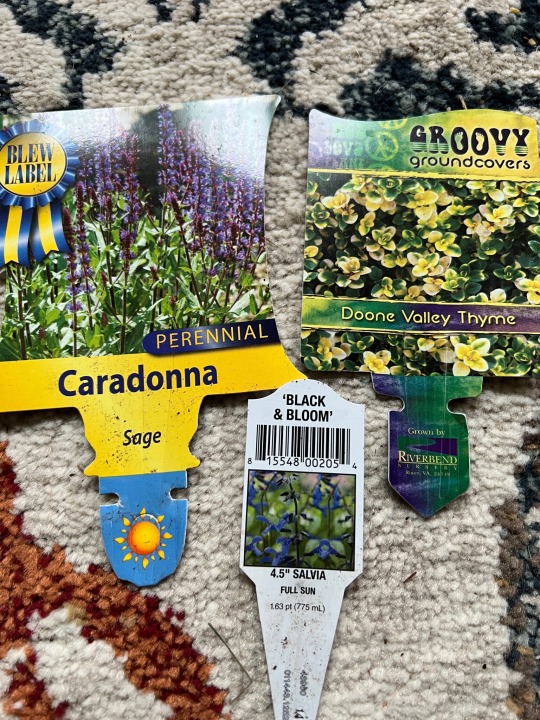
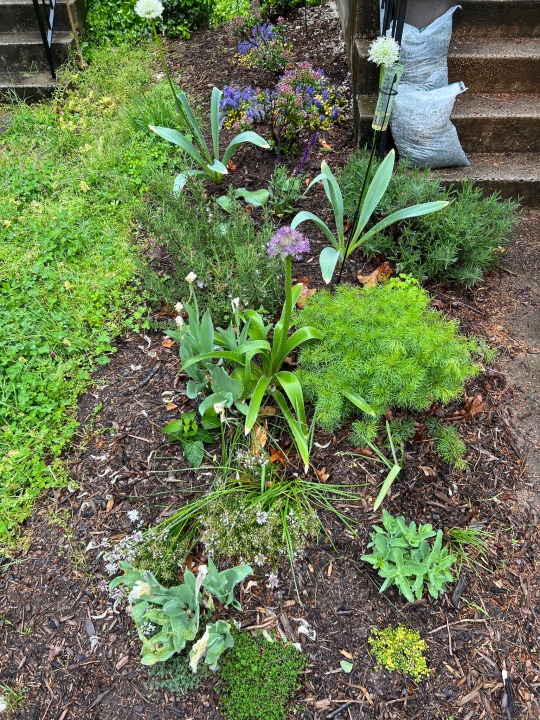
28 April 2023 - Front yard plantings
In the side strip we have:
Doone Valley thyme (yellow-green groundcover in bottom right corner)
Black and Bloom salvia (small shiny leafed plant to the left of the purple allium)
Cardonna sage (behind the rosemary, between the two white alliums)


In the front left corner of the main bed:
Mixed color lupine (uppermost small plant along the left edge)
Bandana Purple Falls lantana (branching plant in the lower right corner) - this is supposed to be a spreading variety of lantana, so we’ll see how well it covers that bit of open space.
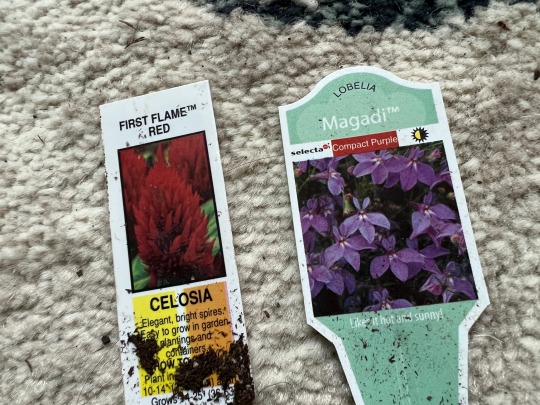
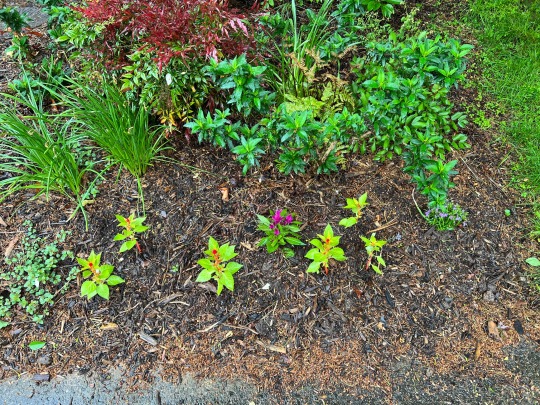
Bottom right corner of the main bed:
A six pack of First Flame Red celosia and an unlabeled purple celosia (middle front area) - the spacing is a little messed up because I thought my salvia from last year didn’t make it and was going to dig it up, but when I started I saw a new leaf coming off a root so I had to plant the last two further left than than originally intended.
Magadi Compact Purple lobelia (bottom right corner
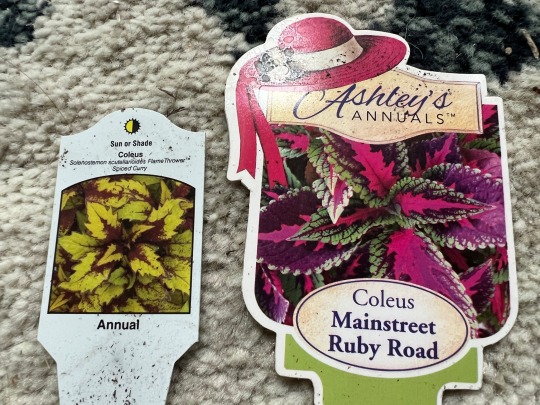
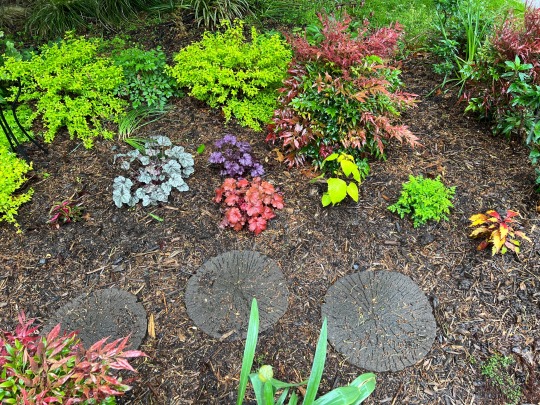
Middle of main bed, along the path:
Main Street Ruby Red coleus (small plant, far left)
Unlabeled bright green coleus (to the right of the coral bells-looking so good!- and in front of the nandina bush)
Flame Thrower Spiced Curry coleus (far right plant)
5 notes
·
View notes
Text
The partial haul from the garden this weekend.
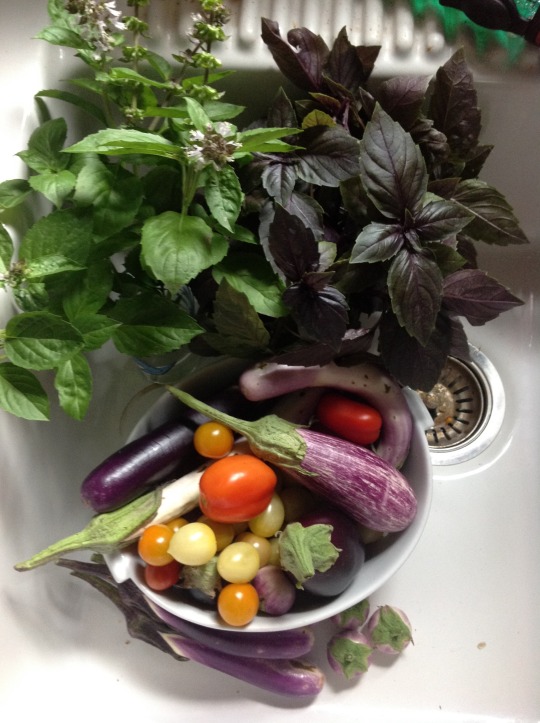
Some Romas and a variety of cherry tomatoes. At least four varieties of eggplant. Purple basil (I dried double this amount too. The mystery basil from seed I saved from a plant in the green waste dumpster this fall—it’s some kind of blue basil, maybe hybridized, so not great for cooking. I let it flower to feed the pollinators and may save some to try for tea. The tomatoes and eggplant have been roasted for use in a curried eggplant veggie burger I’ll make today. Not pictured are large hauls of herbs that I put in the dehydrator—peppermint, dill, and lemon basil. Also not pictured are the prolific Chinese cabbages that I ended up not caring for, but that the chickens love (I’m trimming and shredding the outer leaves for afternoon treats).
Some other pics from the garden:
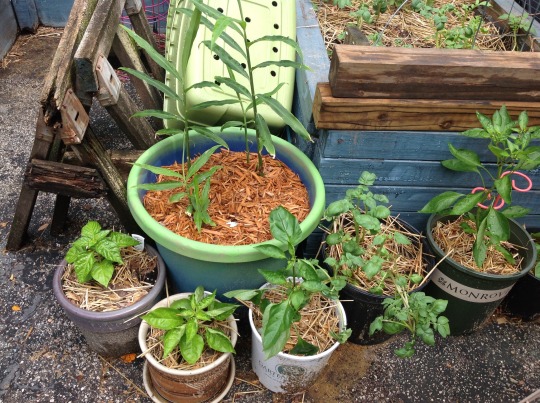
The ginger I sprouted from an old grocery store root is doing very well. I’ve got two smaller shoots in my earthboxes too. It’s surrounded by late-started pepper plants that I’ll overwinter, though it looks like the pimento wants to produce this season too. And one small pot of potatoes from some sprouting new potatoes—I’ll harvest early to complete the cycle.
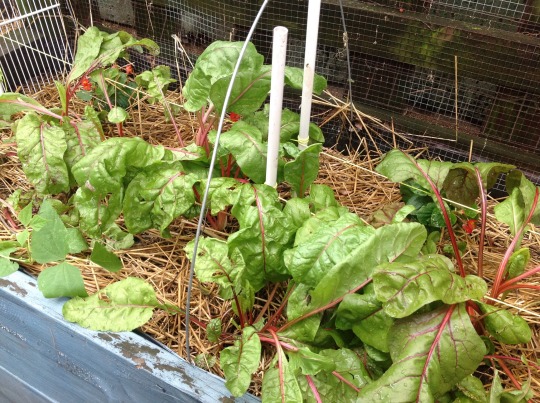
The transplanted chard is doing great despite this bed being almost fully shaded.

The beans I planted in the raised beds were a bust, but this second sowing in protected earthboxes is working out well.
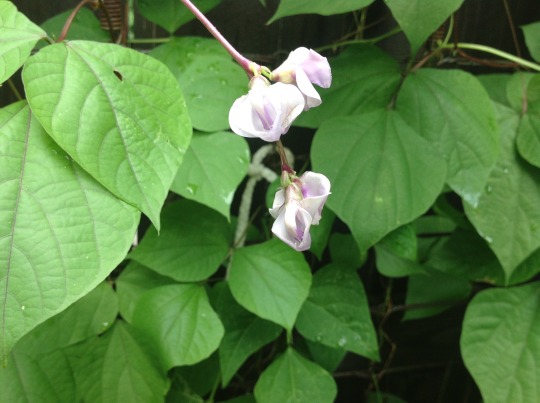
And here’s the hyacinth bean that I planted to climb up and over the back fence to beautify the alley a bit. The critters have left it alone, so I’m trying to sneak in some pole beans in the same row—hopefully they’ll be confused. This was originally supposed to be a planting of scarlet runner beans, but the seedlings all got eaten.

My cucumber experiment has been busting out in hundreds of flowers for weeks without setting a single fruit, which has been highly frustrating. But! I noticed one fruit set on Sunday (and two on my non-netted trap plant). Think they were all just stressed by the high temps. The rains brought a brief span of something more tolerable, so hopefully I’ll be eating a cucumber soon!
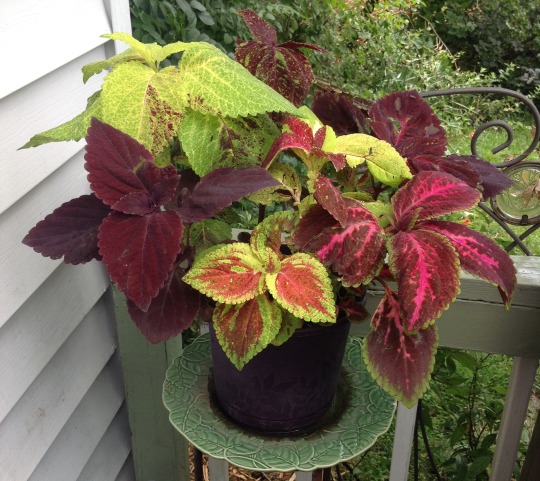
I am definitely ordering some more coleus seeds next year. This worked out great. And there are so many more interesting varieties out there than the ones that are so ubiquitous at the box stores. Planted these with the goal of turning them into a houseplant eventually. Also going to try propagating my faves via cuttings when they’re bigger.
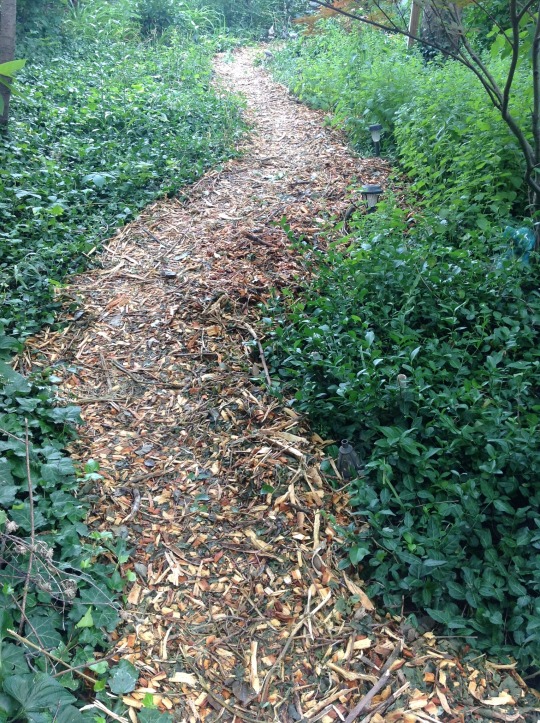
And here’s a section of the path through the side yard with the new wood chips from ChipDrop. It’s still in the process of being trampled down, but it has half the loft of when I initially laid it. Will probably be ready for another 6” by the fall when I hope to get a second drop.
That’s it for random garden updates. At least for now.
#gardening#harvesting#the fruit of my considerable labors this season#this is already more than i got out of my garden all last season#that was just an abysmal year#despite the terribly dry spring things are going much better this year
3 notes
·
View notes
Text

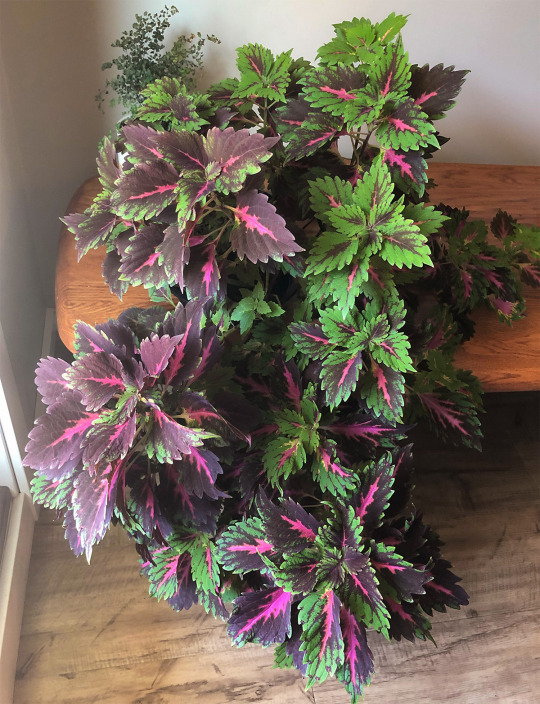
Haven't done a plant update in a hot minute huh. Ruby celebrates her second year of plant life this spring/summer, and wow has she taken off! I used to rotate her but she started growing long branches over the edge of the table...and now I just can't. So I leave her be, prune her leaves every day or two (she's growing SO MANY new ones), and watch her thrive in the sunlight.
It's hard to get a good picture of her scale, but in the first picture you can see her pot in the middle of her mass. So use that for scale when comparing with old pictures.

We need to talk about Gemma. I didn't realize it at the time, but I think campfire coleus plants are supposed to be annuals. I stubbornly refused to let her die over the winter, and uh...yeah...she grew...a little bit... Her tag says she's supposed to be 14-28" tall. I measured her this morning and she's 29.5". She's so tall that if I don't let her rest against the window, she will uproot from her own weight. Woops.
Hugo does alright, but I think he gets too much sun. I was hoping Gemma would shade him a little more, but alas, life never works the way you expect it to. He's still thriving though, his leaves just usually scorch. But he's happy enough.
I don't have any good pictures of Tomas because his pot is currently overrun with my wildflower mix. He's at an awkward stage in life because he's grown too lanky and keeps wanting to fall over. He also keeps growing aerial roots to try and stabilize...aerial roots that he grows over the side of the pot. Not ideal. We're working on it.
#shadesplants#houseplants#coleus#lamium#i'm so proud of my lil plant kiddos#gemma has already tried to bloom twice this summer#we're gonna force her to be a perennial#sorry girl#of course the plants that ARE allowed to flower haven't
2 notes
·
View notes
Text
By Rachel May
Rachel May, English professor and author, came upon Elizabeth Wagner Reed’s book about a decade ago, on Reed’s daughter’s website.
Published April 22, 2023Updated April 24, 2023, 10:50 a.m. ET
This article is part of Overlooked, a series of obituaries about remarkable people whose deaths, beginning in 1851, went unreported in The Times.
In 1992, the geneticist Elizabeth Wagner Reed self-published “American Women in Science Before the Civil War,” a book highlighting 22 19th-century scientists. One of them was Eunice Newton Foote, who wrote a paper on her remarkable discovery about greenhouse gases, “a phenomenon which is of concern to us even now,” Reed wrote.
Foote was forgotten soon after the paper was read aloud by a male scientist at a conference in 1856 and published the following year. A male scientist was eventually credited with the discovery.
Like Foote, Reed herself fell into obscurity, a victim of the erasure of female scientists that the historian Margaret Rossiter coined the Matilda Effect — named for the sociologist Matilda Joslyn Gage, whose 1870 pamphlet, “Woman as Inventor,” condemned the idea that women did not have the skills to succeed in the field.
Reed, however, made significant contributions to the sciences.
She wrote a landmark study about intellectual disability genetics, helped found a field of population genetics and wrote many more papers on botany, the biology of women and sexism in science.
Reed persisted in her research even when she found herself a widow with a toddler during World War II. By the time of her death, in 1996, in spite of publishing more than 34 scholarly papers, public school curriculums and two books, the record didn’t bend in her favor. It wasn’t until 2020, when the scientist and scholar Marta Velasco Martín published a paper on Reed, that her legacy was resurrected.
Reed was born Elizabeth Wagner on Aug. 27, 1912, in Baguio, in what was then called the Philippine Islands, to Catherine (Cleland) and John Ovid Wagner. John was from Ohio and worked in construction there at the time; Catherine, from Northern Ireland, was working in the Philippines as a nurse.
The family later settled on a farm in Ohio, where Elizabeth grew up picking raspberries “from dawn to dusk,” her son William Reed said in a phone interview.

“She learned how to work really hard,” he added. “I remember her saying how much she loved school, partly because it wasn’t doing farm work.”
At the end of one summer, he said, she used some of her earnings to buy a book about wildflowers in Ohio — “her first purchase was a scientific book.”
She would go on to cultivate wildflowers in her backyard as an adult, volunteer at a wildflower arboretum in Minnesota and write about botany in scientific articles and in educational materials for children. Reed’s daughter, Catherine Reed, told Martín that her mother “loved nature, especially plants, and, wanted to be a scientist from a very early age.”

In 1933, Reed earned her bachelor’s degree at Ohio State University, where she also earned a master’s in 1934 and a Ph.D. in plant physiology in 1936. She put herself through school with a scholarship and by washing dishes and working in the cafeteria. In 1939 and 1940, she published her first two papers, one about the effects of insecticides on bean plants and the other about how various types of dusts affect the rate of water loss in yellow coleus plants by night and day.
In 1940, she married a fellow scientist, James Otis Beasley, and had a son, John, with him just after James left to fight in World War II in 1942. When her husband was killed in the war the next year, she supported herself and her son by teaching at five different universities. “The first part of her life,” William Reed said, “was sheer determination.”
She began working with the geneticist Sheldon C. Reed, whom she married in 1946, and together they helped found the field of Drosophila population genetics, which uses fruit flies as a simple and economical method of studying genetics in a laboratory while offering important insights into similar species.
Soon after, the couple moved to Minnesota, where Sheldon was hired as the director of the Dight Institute of Human Genetics at the University of Minnesota in Minneapolis. Elizabeth was denied a job at the university, which cited rules against nepotism.
The Reeds went on to write a book about intellectual disabilities that analyzed data from 80,000 people and their families; the study, they said, was “one of the largest genetic investigations so far completed.”
They found that disabilities could be caused by genetic or environmental factors and could therefore be heritable. They also proposed — to controversy that still exists today — that such disabilities were preventable through education of the general public and voluntary sterilization or birth control of potential parents with low I.Q.s.
Though Elizabeth’s name was listed first as author, a letter of acknowledgment calling the couple’s work “truly magnificent” referred to them as “Dr. and Mrs. Reed.”
Reed was quite aware that her husband was receiving more credit, her son William said, but she never let it embitter her. In 1950, however, she published a paper on sexism in the sciences based on her study of 70 women working in the field. It found that marriage and childbirth decreased their productivity and sometimes even dissuaded them from continuing their careers. It led her to mentor women in the field through the advocacy group Graduate Women in Science.
“She was a scientist before it was popular for women to become scientists,” Nancy Segal, a psychologist at California State University known for her study of twins, said in an interview, “and she was a great role model for so many of us women postdocs at the time.”
In writing “American Women in Science Before the Civil War,”Reed corresponded with archivists and scoured card catalogs, journals and proceedings of associations and societies. In addition to recognizing Eunice Foote’s work almost two decades before other scientists did, the book included biographies of, among others, the astronomer Maria Mitchell; Ellen Smith Tupper, who was known as the “Queen Bee of Iowa” for her study of that insect; and the entomologist Mary Townsend.
Reed wrote that it was a testimony to the strengths of these women that they pursued science despite the fact that they were “often denied entry to colleges and unable to attain professional status.”

Reed also supported teaching children about science so that they would have the tools to solve what she called the “current crises of exploding populations and deteriorating environments.” She published papers about teaching proper scientific methods in schools and created curriculums with the University of Minnesota.
“Classrooms always house some living organisms,” she wrote, tongue-in-cheek, in the Journal of the Minnesota Academy of Science in 1969. “In many, unfortunately, all are of a single species, Homo sapiens. The population consists of many immature species (children) and a few adults, usually female (teachers). This makes for a certain homogeneity, but it can be alleviated by introduction of other living species, animal or plant.”
The fact that Reed was, like so many of her predecessors, lost to history is indicative of the pervasive sexism of her era. But women today continue to face hurdles in entering scientific fields. A report from the Massachusetts Institute of Technology this year found that “the underrepresentation of women in the science, technology, engineering, and mathematics (STEM) fields continues to persist,” with women making up only 28 percent of the STEM work force.
Like Reed, her daughter, Catherine, was a scientist, having earned a Ph.D. in ecology, but she ultimately became so disillusioned that she held a ceremonial burning of her degree and instead turned to artwork and championing her mother’s legacy. She published her mother’s book on American women in science on her website in about 2010. She died in 2021 at 73.
Elizabeth Wagner Reed died at 83 on July 14, 1996, most likely of cancer. She recognized her symptoms, but, knowing what the treatments would be like and, to her mind, the probable outcome, she never sought a diagnosis. (Sheldon Reed died in 2003.)
William Reed said there was no joy like taking a walk with his mother, who could describe every plant and animal they passed. She and Sheldon were avid bird-watchers (and occasional polka dancers), and the family spent many vacations at Lake Itasca, Minn., relaxing under old-growth Norway Pines.
Reed’s favorite flower was the showy lady’s slipper, the state flower of Minnesota, an orchid notoriously difficult to cultivate, like the careers of many of the women she wrote about. Its Latin name is Cypripedium reginae, with reginae meaning queen.
#Elizabeth Wagner Reed#Women in science#American Women in Science Before the Civil War#Books for women#Eunice Newton Foote#Margaret Rossiter#Matilda Effect#Matilda Joslyn Gage#Woman as Inventor#Marta Velasco Martín#Graduate Women in Science#Maria Mitchell#Ellen Smith Tupper#Mary Townsend
6 notes
·
View notes